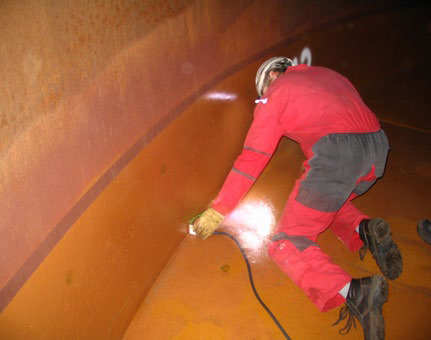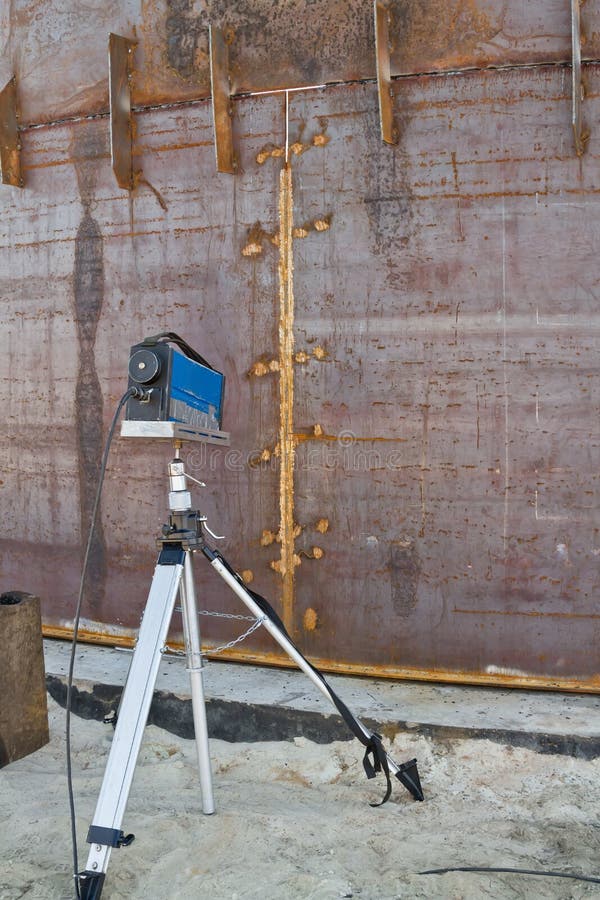Why Routine Tank Welding Inspection is Critical for Structural Integrity
Why Routine Tank Welding Inspection is Critical for Structural Integrity
Blog Article
Comprehensive Overview to Effective Storage Tank Welding Examination Techniques and Ideal Practices for Quality Control
In the world of container welding, rigorous inspection methods are critical for guarding architectural honesty and making sure conformity with industry policies. This overview provides an organized method to various examination techniques, including visual evaluations and non-destructive screening, which play an essential function in detecting imperfections prior to they rise into severe concerns. Furthermore, the importance of thorough documentation and the application of constant renovation methods can not be overstated. As we discover these vital components, it comes to be clear that a positive examination technique is not simply helpful, but important for operational success in atmospheres managing harmful products.
Importance of Tank Welding Assessment

Tank welding examination serves as a preventative action, recognizing prospective problems such as cracks, porosity, or inappropriate joint penetration prior to they rise into serious issues. Normal examinations not just abide with market regulations and criteria however likewise improve the durability of the storage tanks, reducing the demand for costly repair work or substitutes.

Visual Assessment Techniques
Employing systematic aesthetic assessment techniques is critical for assessing the quality and stability of welded joints in storage tanks. This approach functions as the initial line of protection in recognizing potential problems such as cracks, undercuts, and insufficient infiltration. The inspector should come close to the task with an eager eye, using suitable devices like magnifying glasses, flashlights, and mirrors to enhance visibility.
During the examination procedure, the assessor should examine the weld profile, ensuring it abides by defined criteria and guidelines (Tank Welding Inspection). This consists of analyzing the bead width, height, and blend with the base material. Assessors should additionally pay very close attention to the bordering locations for indications of thermal distortion or contamination that may influence the weld's performance
Paperwork of findings is important; inspectors need to record any kind of anomalies, categorizing them by severity for more examination. This systematic method not just aids in instant issue identification but likewise adds to lasting top quality assurance by making certain conformity with industry criteria. Routine training and calibration of visual examination strategies further enhance the reliability of assessments, inevitably leading to safer and a lot more resilient storage tank frameworks.
Non-Destructive Examining Methods
Non-destructive testing (NDT) techniques are frequently utilized in storage tank welding examinations to analyze the honesty of bonded joints without endangering their structural integrity. These techniques are essential for recognizing defects such as fractures, gaps, and incorporations that could lead to catastrophic failures if left undetected.
Usual NDT techniques include ultrasonic testing more (UT), which utilizes high-frequency audio waves to discover inner flaws; radiographic testing (RT), employing X-rays or gamma rays to visualize weld structures; and magnetic bit testing (MT), which discloses surface area and near-surface stoppages in ferromagnetic products (Tank Welding Inspection). Liquid penetrant screening (PT) is likewise commonly utilized, with the ability of finding surface-breaking issues by applying a fluorescent or shade comparison dye
Each NDT approach has its specific applications and benefits, making it necessary for examiners to select the appropriate strategy based upon the product and the kind of weld being assessed. The integration of these NDT approaches right into the inspection process boosts the overall quality guarantee structure, making sure that bonded storage tanks satisfy security and performance requirements. Inevitably, NDT plays an important function in preserving the integrity and durability of tank structures in different industrial applications.

Paperwork and Reporting
Making sure complete paperwork and coverage throughout storage tank welding examinations is critical for preserving compliance with market standards and assisting in effective interaction among stakeholders. Appropriate documents serves as a detailed document of evaluation activities, searchings for, and any kind of rehabilitative activities taken throughout the welding procedure. This details is crucial not just for top quality guarantee but also for audits and regulatory reviews.

A well-structured assessment report should include information such as the date of assessment, names of examiners, welding procedures utilized, materials used, and any inconsistencies from established standards. In addition, pictures and diagrams can enhance the quality of the report, giving aesthetic context to the findings. It is additionally vital to record any kind of non-conformities along with their resolution, making certain that all stakeholders are notified of possible threats and the actions taken to alleviate them.
Moreover, keeping a central data source for all evaluation records permits simple access and testimonial, promoting a society of openness and accountability. By focusing on thorough documents and coverage, companies can not just support quality guarantee however likewise enhance their track record within the sector, eventually causing boosted safety and security and operational efficiency.
Continuous Improvement Practices
Continuous renovation techniques are crucial for improving the quality and performance of storage tank welding inspections. One reliable strategy entails normal training and upskilling of assessment personnel to remain abreast of the most recent welding innovations and criteria.
Additionally, using data-driven analysis permits organizations to track inspection results, recognize trends, and identify areas for renovation. Utilizing devices such as source analysis can help in comprehending sites the underlying problems leading to issues, allowing targeted interventions. In addition, obtaining responses from evaluation groups and stakeholders creates a collective atmosphere that motivates innovative solutions.
Incorporating innovative innovations, such as automated examination systems and real-time monitoring, can substantially improve the precision and speed of assessments. Regular audits of the inspection procedures also add to a society of responsibility and constant improvement. Ultimately, these continual renovation methods not just elevate the quality of container welding examinations but also add to general operational quality and client satisfaction.
Verdict
In conclusion, efficient tank welding inspection is essential for guaranteeing the architectural honesty and safety of storage systems, specifically those managing harmful materials. Utilizing a mix of visual evaluation methods recommended you read and non-destructive screening methods assists in the early identification of issues, thus preserving conformity with market criteria.
Report this page